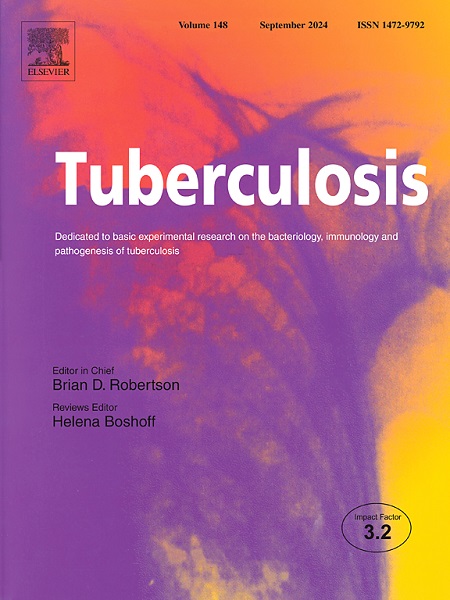Urine-based ELISA using a recombinant chimeric protein for the diagnosis of paucibacillary and multibacillary leprosy
IF 2.9
3区 医学
Q3 IMMUNOLOGY
引用次数: 0
Abstract
Leprosy diagnosis is difficult to perform due to variable sensitivity and/or specificity of the tests. In addition, the collection of the blood samples requires laboratorial structure and trained professionals. In the present study, the diagnostic efficacy of M1 chimeric protein, which was recently showed to be antigenic for leprosy using a serum-based ELISA, was evaluated against patient urine. Paired serum and urine samples were collected from patients with paucibacillary (PB) and multibacillary (MB) leprosy, tegumentary and visceral leishmaniasis, tuberculosis, Chagas disease, malaria, and HIV-infected subjects. Samples from healthy individuals and household contacts were also used. The protein and peptides used to compose it were used as antigens, and results showed that the four peptides presented good sensitivity and specificity to detect MB leprosy, while M1 protein showed sensitivity and specificity of 98.5 % and 100 %, respectively, to detect both PB and MB leprosy, when an urine-based ELISA was performed. Positive (PPV) and negative (NPV) predictive values were 100 % and 98.3 %, respectively. In a serum-based ELISA, sensitivity and specificity were 96.9 % and 100 %, respectively, with PPV and NPV of 100 % and 96.5 %, respectively. In conclusion, preliminary data suggest that M1 protein could be considered for diagnosis of leprosy by using patient urine.
利用重组嵌合蛋白的尿基ELISA诊断少菌和多菌麻风
由于检测的敏感性和/或特异性不同,麻风病诊断很难进行。此外,血液样本的采集需要实验室结构和训练有素的专业人员。在本研究中,M1嵌合蛋白诊断麻风病的效果,最近被证明是抗原性的基于血清的ELISA,评估病人的尿液。收集了少杆菌性(PB)和多杆菌性(MB)麻风病、皮肤和内脏利什曼病、结核病、恰加斯病、疟疾和艾滋病毒感染者的配对血清和尿液样本。还使用了健康个体和家庭接触者的样本。将其组成的蛋白和多肽作为抗原,结果表明,4种多肽对MB麻风的检测具有良好的敏感性和特异性,其中M1蛋白对PB和MB麻风的检测灵敏度和特异性分别为98.5%和100%。阳性(PPV)和阴性(NPV)的预测值分别为100%和98.3%。在基于血清的ELISA中,敏感性和特异性分别为96.9%和100%,PPV和NPV分别为100%和96.5%。总之,初步数据表明,M1蛋白可被考虑用于麻风患者尿液的诊断。
本文章由计算机程序翻译,如有差异,请以英文原文为准。
求助全文
约1分钟内获得全文
求助全文
来源期刊

Tuberculosis
医学-呼吸系统
CiteScore
4.60
自引率
3.10%
发文量
87
审稿时长
49 days
期刊介绍:
Tuberculosis is a speciality journal focusing on basic experimental research on tuberculosis, notably on bacteriological, immunological and pathogenesis aspects of the disease. The journal publishes original research and reviews on the host response and immunology of tuberculosis and the molecular biology, genetics and physiology of the organism, however discourages submissions with a meta-analytical focus (for example, articles based on searches of published articles in public electronic databases, especially where there is lack of evidence of the personal involvement of authors in the generation of such material). We do not publish Clinical Case-Studies.
Areas on which submissions are welcomed include:
-Clinical TrialsDiagnostics-
Antimicrobial resistance-
Immunology-
Leprosy-
Microbiology, including microbial physiology-
Molecular epidemiology-
Non-tuberculous Mycobacteria-
Pathogenesis-
Pathology-
Vaccine development.
This Journal does not accept case-reports.
The resurgence of interest in tuberculosis has accelerated the pace of relevant research and Tuberculosis has grown with it, as the only journal dedicated to experimental biomedical research in tuberculosis.
 求助内容:
求助内容: 应助结果提醒方式:
应助结果提醒方式:


